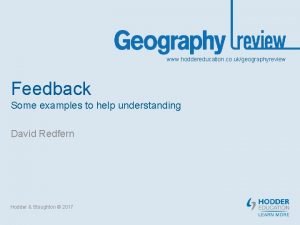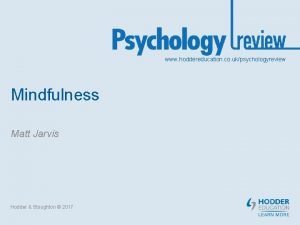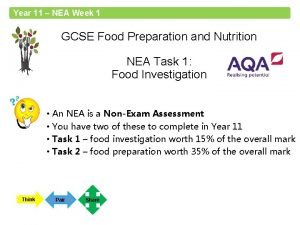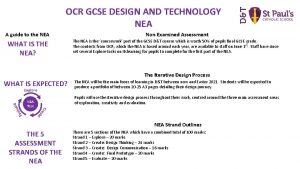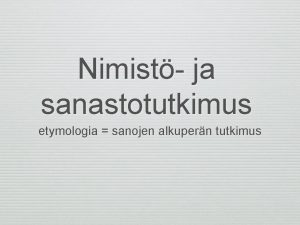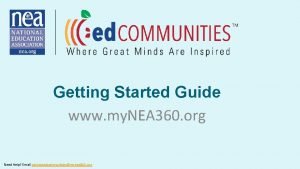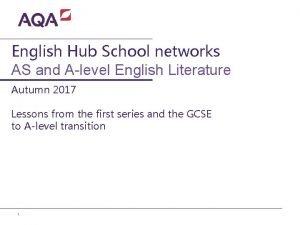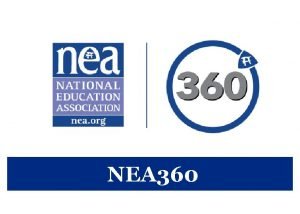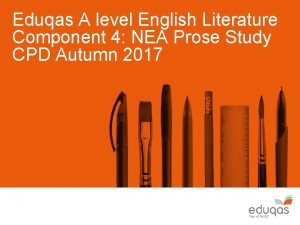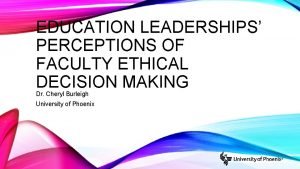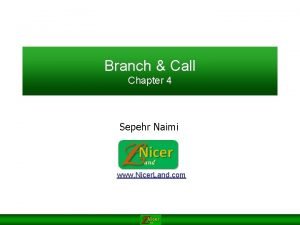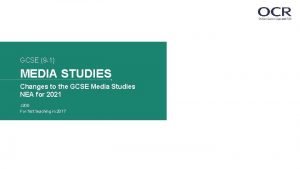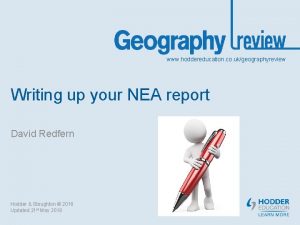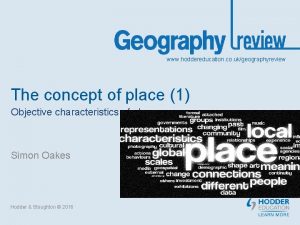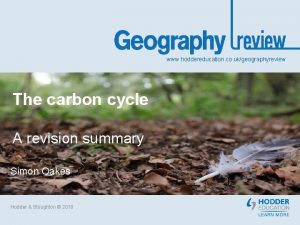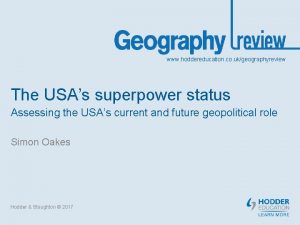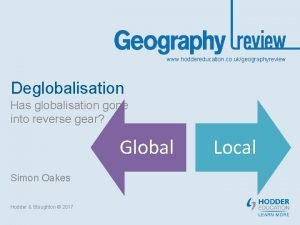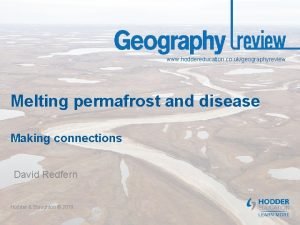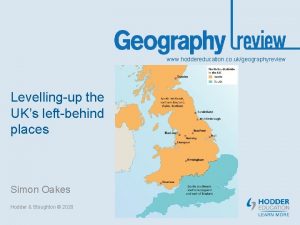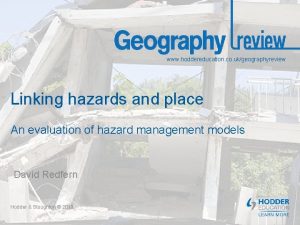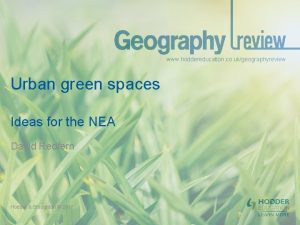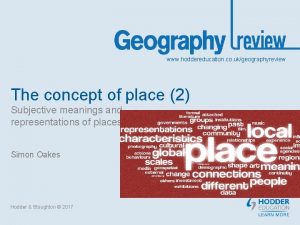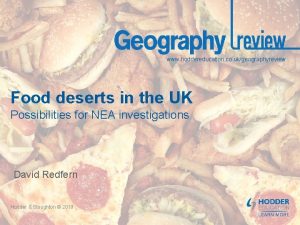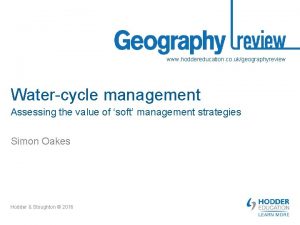www hoddereducation co ukgeographyreview Writing up your NEA


















- Slides: 18

www. hoddereducation. co. uk/geographyreview Writing up your NEA report David Redfern Hodder & Stoughton © 2017

Introduction This presentation supports the article ‘What makes examiners weep: Top ten don’ts for your independent investigation’ in GEOGRAPHY REVIEW Vol. 31, No. 1. It suggests a way in which you could go about writing up your final report for the independent investigation (NEA). Some initial points: • Keep all your investigation work together in a separate folder. • Organise this into sections for easy retrieval. • The final write up of your investigation should be well structured, logically organised, and clearly and concisely written. There are three aspects of this process that you should consider: • structure • language • presentation Hodder & Stoughton © 2017

Structure (1) The structure of the report should help the reader to understand it, and should help you in to organise it logically. This checklist provides a generalised structure to your report: • Candidate ‘Independent investigation proposal/record’ form. • Title page and contents page. • Executive summary (not a requirement, but advisory). • Introduction: aims/questions/hypotheses/issues being examined, and scene setting. • Sources of information used. • Methods of data collection. • Data presentation, analysis and interpretation. • Conclusion including overall evaluation. • Appendices and bibliography. Hodder & Stoughton © 2017

Structure (2) You need not write these in the order given. Indeed it may be easier if you do not. For example, the executive summary (if you decide to write one) is perhaps best written at the end of the whole process, as it is only at this stage that the ‘whole picture’ can be described. The following slides provide a suggested order of completion. Hodder & Stoughton © 2017

1 Data presentation, analysis and interpretation This is the section where you present, analyse and interpret your findings. At this stage you will have collected the data, sorted them and selected the most useful pieces. You will know what you have found out, and what it all means. Your results will be complete, and they will be most fresh in your mind at this time. You should be able to interpret each separate section of your results, and formulate conclusions for each one. The ‘whole picture’ may begin to appear in your head. Hodder & Stoughton © 2017

2 Sources of information and methods of data collection Now you can write about what information you collected, and the methods you used. • Make sure you have included both primary and secondary data. • Give a description of how you collected your primary data, possibly including a photograph of the equipment you used, and of you using it. • Do not forget to discuss any limitations of the methods of collection you used, and/or the data sources themselves. Hodder & Stoughton © 2017

3 Conclusion You should now be in a position to write the conclusion of your investigation, possibly by writing a series of sub-conclusions for each section of the data analysis first. Towards the end of this section, try to draw together each of the sub-conclusions into one overall conclusion — the ‘whole picture’. It should end with an overall summary and an evaluation of all the major findings of your investigation. Do not present anything new to the reader at this stage. Hodder & Stoughton © 2017

4 Introduction (aims, questions/ hypotheses/issues and scene setting) Having written up the bulk of the enquiry, you can now write the introduction, making sure it ties in with what follows. This section is intended to acquaint the reader with the purpose of the enquiry, and the background to it. Clearly state the aims/questions/hypotheses/issues of your investigation, and give a resume of the geographical theory on which the investigation is based. Also give the geographical context of the investigation, the location(s) and wider setting. You may want to include a map, sketch or photographs. Hodder & Stoughton © 2017

5 Appendices and bibliography (1) The appendices contain additional pieces of evidence that may be of interest to the reader, but are not essential to the main findings. The bibliography provides detail of the secondary sources that have been used in your research, either as guides or as sources of information. Remember that any diagrams or text you have used or copied from secondary sources must be acknowledged. For advice on referencing, see next slide. Hodder & Stoughton © 2017

5 Appendices and bibliography (2) Systems of referencing Data source Referencing advice Book Name of the author(s), year published, title, publisher, pages used. Newspaper Name of the author(s), year published, article title, newspaper name Online source Name of the author(s), year published, page title, website name, available at URL. Also give the last date you accessed it. Hodder & Stoughton © 2017

6 Contents page and title page • All the sections of the report can now be listed in sequence with accurate page references. • Provide the title of your report. Include also your name, candidate number, centre number and date of completion. • Complete the official form required by your examination board — the candidate ‘Geography independent investigation’ form — which will vary according the awarding body (AB). Place it in the position required by the AB. Hodder & Stoughton © 2017

7 Executive summary (Not a requirement, but advisory) • An executive summary should provide a brief statement (no more than 250 words) covering all the main aspects of the investigation. • A good executive summary introduces the subject of the full report, refers to its aims, and provides a brief synopsis of the findings. • A very good executive report tempts the reader into reading more by being comprehensible, interesting and stimulating. • It should also make sense and read as a separate document from the full report. Hodder & Stoughton © 2017

Language (1) The quality of language you use in writing up your investigation is important. You are entirely in control of this aspect of the process, and your style of writing must be appropriate for this exercise. You should avoid poor or inaccurate use of English language. In particular: • your sentences should be grammatically correct, and well punctuated • your writing should be well-structured, with good use of paragraphs • your spelling must be accurate (use a dictionary or your PC spellcheck) • you must be clear in your use of specialist terminology, and in the expression of your ideas • you should be aware that the assessment of your work may be influenced by the above aspects of your writing Hodder & Stoughton © 2017

Language (2) Proofreading is an important part of this process. Prior to submission, make sure you read through the draft from start to finish, and mark any places where there are errors or inconsistencies. If possible, ask someone to read your report for you as a second check — parents or relatives may help. You need someone who is going to be highly critical of what you have written. A report littered with spelling mistakes or grammatical errors does not impress, and it is possible that your PC/Mac spellcheck may miss something (for example, you may have wished to type ‘than’ but typed ‘that’ – spellcheck will recognise this as correct, whereas a proofreader would spot it as an error). Hodder & Stoughton © 2017

Presentation (1) Most people are influenced by presentation, and that includes teachers and NEA moderators. Bear in mind the following: • A neatly presented handwritten or typed report is going to create a favourable impression, before its contents are rea. • Adequate headings, numbering of pages and carefully produced illustrations will make it easier for the reader to navigate and understand the report • Layout is also important. Do not crowd the pages with dense text, which looks unattractive. Provide adequate margins, use either double or 1. 5 line spacing if using a word processing package, and make use of clear heading levels with short paragraphs. • More sophisticated reports will number the paragraphs in sequence, though this is not a requirement. Hodder & Stoughton © 2017

Presentation (2) It is essential to make sure that maps and diagrams are inserted in the correct place in the report — it is irritating to have to flick backwards and forwards when trying to read the document. Make sure all the references in the text are included in the bibliography. Reports written within the stated word limit (3, 000– 4, 000 words) tend to be those that are better planned, structured and executed. Make sure you allow enough time to add the finishing touches which give your work the ‘final polish’. It goes without saying that this time will be available providing you have not left the completion too near to the final deadline. Hodder & Stoughton © 2017

Finally… You should now be in a position to submit your finished product confident in the belief that it is the best you could have done. Make sure you get a signed receipt from your teacher that s/he has received your report. Reports can go missing occasionally, and you may need this as insurance. Hodder & Stoughton © 2017

This resource is part of GEOGRAPHY REVIEW, a magazine written for A-level students by subject experts. To subscribe to the full magazine go to: http: //www. hoddereducation. co. uk/geographyreview All illustrations copyright Fotolia Hodder & Stoughton© 2017
 Www hoddereducation com
Www hoddereducation com Positive and negative feedback examples
Positive and negative feedback examples Ansoff matrix dyson
Ansoff matrix dyson Www hoddereducation com
Www hoddereducation com Www hoddereducation com
Www hoddereducation com Gcse food tech nea 2 example
Gcse food tech nea 2 example Geography nea title examples
Geography nea title examples Ocr gcse pe nea
Ocr gcse pe nea Design technology gcse coursework examples
Design technology gcse coursework examples Sanojen alkuperän tutkimus
Sanojen alkuperän tutkimus Nea mb
Nea mb Commedia nuova greca
Commedia nuova greca Nea ed communities
Nea ed communities Nea prohibited texts
Nea prohibited texts Nea360
Nea360 A level english literature eduqas
A level english literature eduqas Nea code of ethics
Nea code of ethics Branch nea 4b branch 1byasminreuters
Branch nea 4b branch 1byasminreuters Unit 1: media representations mark scheme
Unit 1: media representations mark scheme

